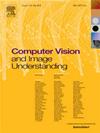AdaptDiff:用于弱光图像增强的自适应扩散学习
IF 3.5
3区 计算机科学
Q2 COMPUTER SCIENCE, ARTIFICIAL INTELLIGENCE
引用次数: 0
摘要
从低光图像中恢复被噪声遮挡的细节是一项具有挑战性的任务。最近的扩散模型在低水平视觉任务中取得了相对有希望的结果。然而,仍然存在两个问题:(1)在非均匀光照条件下,低照度图像无法高质量恢复;(2)模型泛化能力有限。针对这些问题,本文提出了一种基于多尺度结构扩散的自适应增强算法(AdaptDiff)。AdaptDiff在扩散过程中采用自适应高阶映射曲线(AHMC)对图像进行逐像素映射,从而调节图像内不同区域之间的亮度水平。此外,提出了一种多尺度结构引导方法(MSGD)作为隐式偏差,将图像的结构特征告知模型的中间层,从而更有效地恢复清晰的图像。通过结构信息引导扩散方向,有利于即使面对以前没有遇到过的数据,也能保持模型的良好性能。在常用基准测试上的大量实验表明,AdaptDiff具有优越的性能和效率。本文章由计算机程序翻译,如有差异,请以英文原文为准。
AdaptDiff: Adaptive diffusion learning for low-light image enhancement
Recovering details obscured by noise from low-light images is a challenging task. Recent diffusion models have achieved relatively promising results in low-level vision tasks. However, there are still two issues: (1) under non-uniform illumination conditions, the low-light image cannot be restored with high quality, and (2) the models have limited generalization capabilities. To solve these problems, this paper proposes an Adaptive Enhancement Algorithm guided by a Multi-scale Structural Diffusion (AdaptDiff). AdaptDiff employs adaptive high-order mapping curves (AHMC) for pixel-by-pixel mapping of the image during the diffusion process, thereby adjusting the brightness levels between different regions within the image. In addition, a multi-scale structural guidance approach (MSGD) is proposed as an implicit bias, informing the intermediate layers of the model about the structural characteristics of the image, facilitating more effective restoration of clear images. Guiding the diffusion direction through structural information is conducive to maintaining good performance of the model even when faced with data that it has not previously encountered. Extensive experiments on popular benchmarks show that AdaptDiff achieves superior performance and efficiency.
求助全文
通过发布文献求助,成功后即可免费获取论文全文。
去求助
来源期刊

Computer Vision and Image Understanding
工程技术-工程:电子与电气
CiteScore
7.80
自引率
4.40%
发文量
112
审稿时长
79 days
期刊介绍:
The central focus of this journal is the computer analysis of pictorial information. Computer Vision and Image Understanding publishes papers covering all aspects of image analysis from the low-level, iconic processes of early vision to the high-level, symbolic processes of recognition and interpretation. A wide range of topics in the image understanding area is covered, including papers offering insights that differ from predominant views.
Research Areas Include:
• Theory
• Early vision
• Data structures and representations
• Shape
• Range
• Motion
• Matching and recognition
• Architecture and languages
• Vision systems
 求助内容:
求助内容: 应助结果提醒方式:
应助结果提醒方式:


